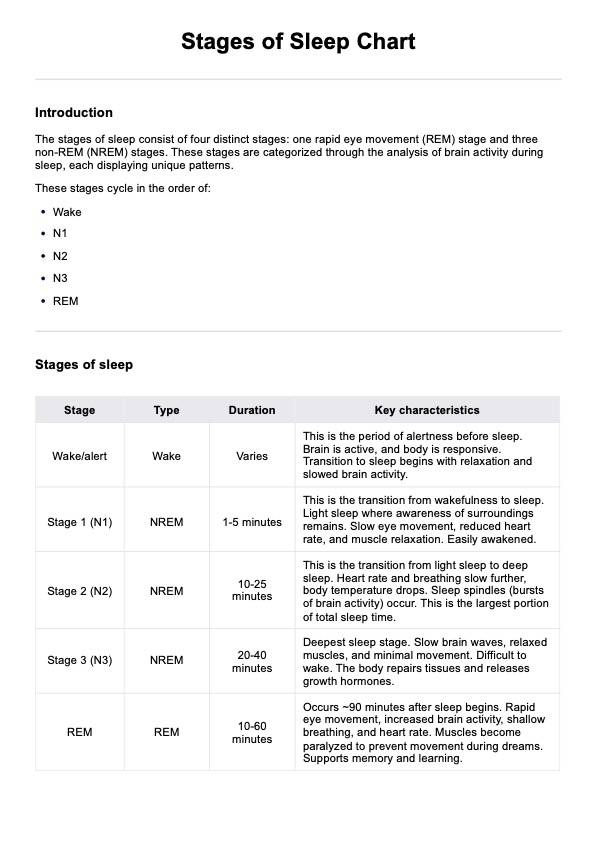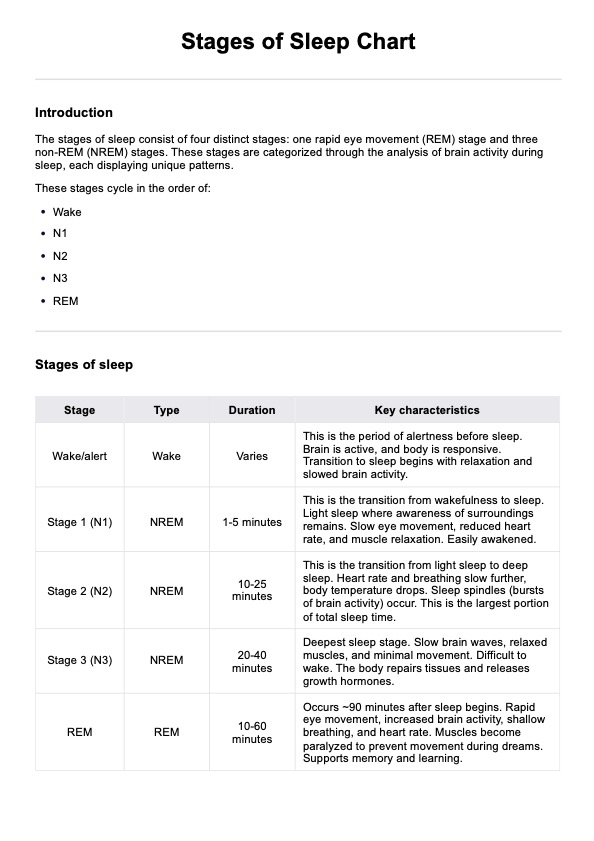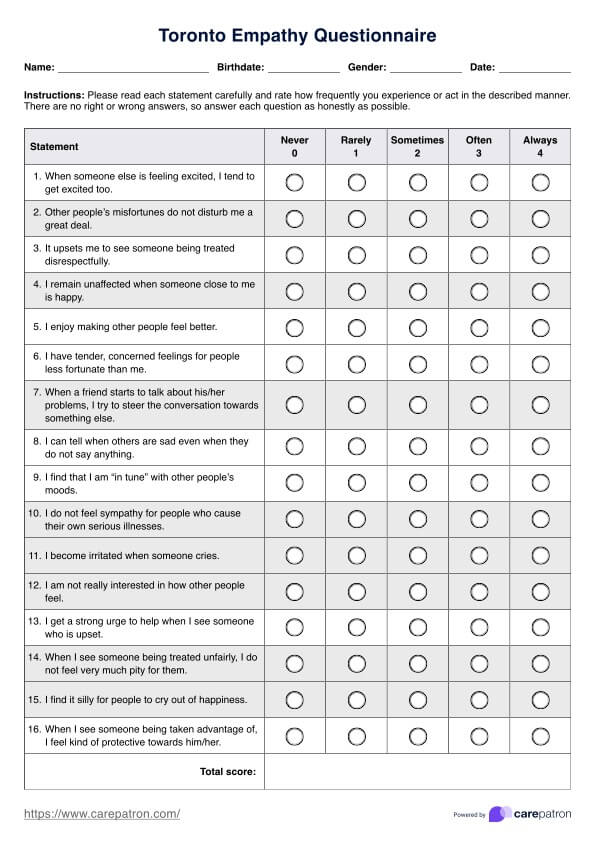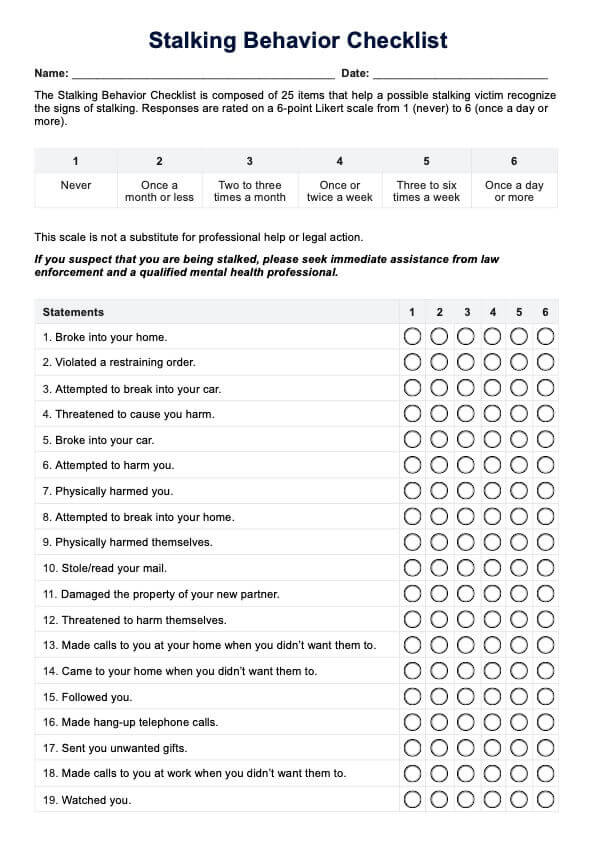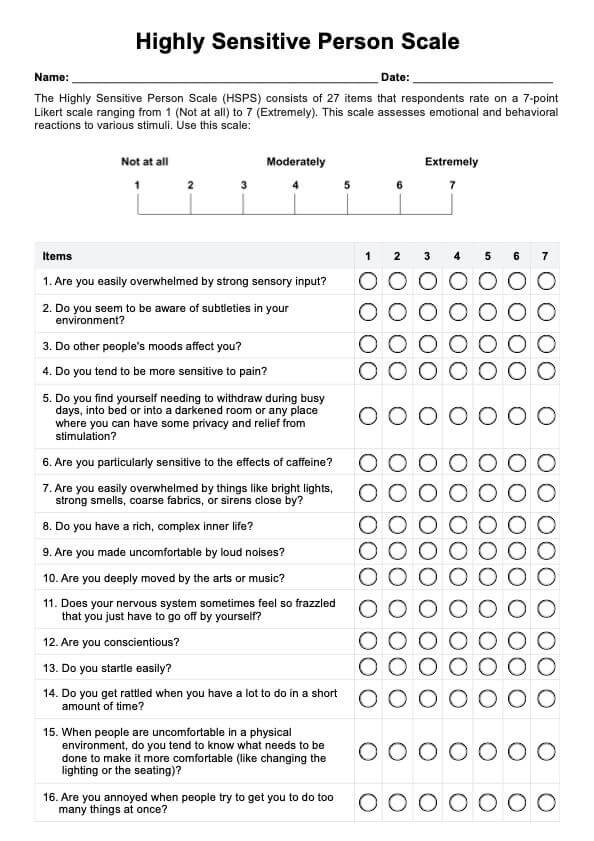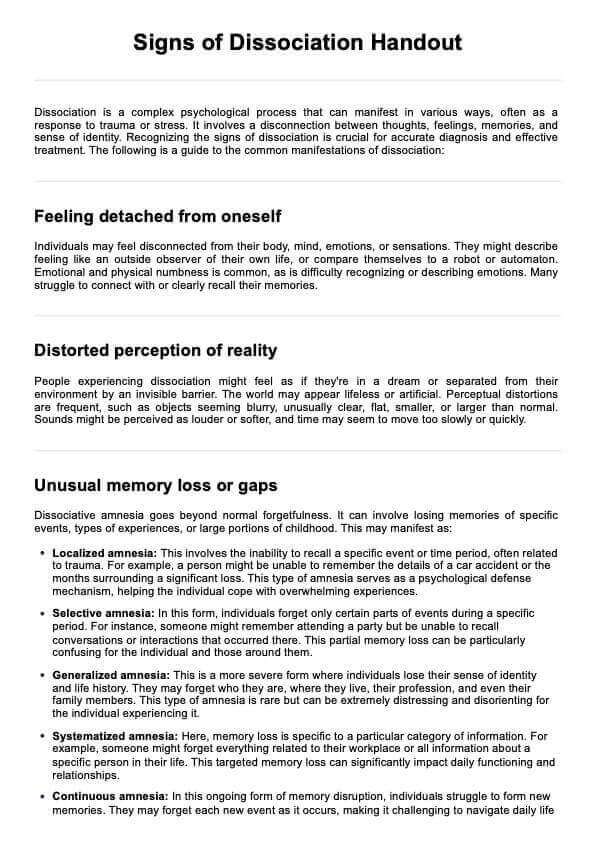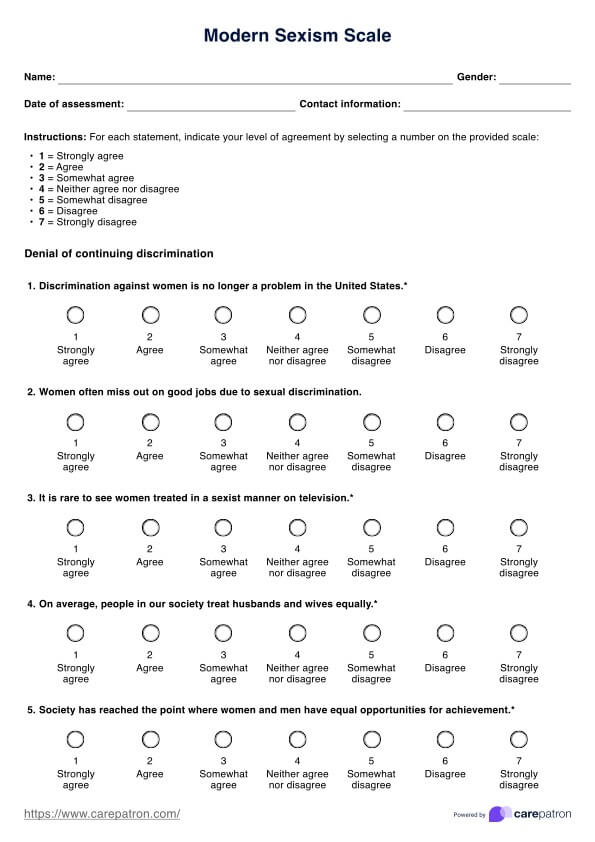Stages of Sleep Chart
Access Carepatron's free Stages of Sleep Chart PDF chart and enhance clinical understanding of sleep cycles with detailed examples for patient assessments.


What is a sleep cycle?
A sleep cycle is the recurring pattern of alternating rapid eye movement (REM) sleep and slow-wave sleep, also known as the deep sleep stage. This cycle repeats four to six times per night, with each cycle lasting 80 to 100 minutes (National Heart, Lung, and Blood Institute, 2022).
A complete sleep cycle consists of three non-REM (NREM) stages followed by REM sleep (Colten & Altevogt, 2015). The cycle plays a vital role in sleep quality, as it regulates hormone production, muscle repair, and memory consolidation. Irregularities in the sleep schedule can lead to sleep deprivation, affecting the immune system and cognitive function.
Sleep spindles, bursts of brain activity during NREM sleep, contribute to learning and memory retention (Cowan et. al., 2020). Disruptions, such as sleep apnea and obstructive sleep apnea, prevent the body from achieving enough sleep and a healthier sleep cycle. Maintaining a good night's sleep is essential for preventing sleep disorders and ensuring proper progression through each deep sleep phase.
Stages of Sleep Chart Template
Stages of Sleep Chart Example
Stages of sleep
The REM sleep cycle consists of different sleep stages, progressing from wakefulness to deep sleep and rapid eye movement sleep (Patel et al., 2024). These stages form the NREM cycle and REM sleep, which play essential roles in cognitive and physical restoration. Maintaining a consistent sleep schedule with seven to nine hours of sleep ensures optimal function during waking hours.
Wake
The wake stage is the transition between the sleep-wake cycle and falling asleep. It is the state of alertness before falling asleep and is commonly not considered as an actual sleep stage. During this phase, the brain remains highly active, processing information from the day. If prolonged, disruptions such as periodic limb movement disorder may occur. Proper sleep medicine practices help regulate this stage for a smoother transition into sleep.
N1
As the first stage of the NREM cycle, N1 is a light sleep phase where brain waves slow, and breathing slows. This stage lasts only a few minutes, allowing the body to shift from wakefulness to quiet sleep. Sleep inertia may occur if awakened during this stage, leading to grogginess.
N2
The second stage deepens light sleep, lasting 10-25 minutes. Sleep spindles, brief bursts of brain activity, help strengthen neural connections. Breathing slows, and muscle activity decreases, preparing the body for deeper sleep. This stage constitutes the largest portion of nightly sleep and is vital for memory consolidation.
N3
Known as the deep sleep stage, N3 is critical for physical restoration. Brain waves slow significantly, and breathing slows, allowing tissue repair and hormone release. This stage is crucial for immune function and overall sleep quality. Lack of enough REM sleep and deep sleep can contribute to fatigue and cognitive decline.
REM
During REM sleep, the brain becomes highly active, resembling wakefulness. Active sleep occurs, where vivid dreams happen. Rapid eye movement sleep supports emotional regulation, learning, and memory processing. A healthy REM sleep cycle prevents cognitive impairment and ensures a healthier sleep cycle.
How does our Stages of Sleep Chart work?
Medical professionals can efficiently use our Stages of Sleep Chart to assess and analyze patient sleep patterns. By following these structured steps, practitioners can integrate the Stages of Sleep Chart into their workflow, improving diagnosis and treatment for sleep-related conditions.
Step 1: Access the chart
To begin, click the “Use template” button to immediately access the Stages of Sleep Chart within Carepatron’s platform. You can also click on "Download" to get a PDF copy of the template. Once accessed, the chart becomes a valuable resource for tracking sleep cycles, identifying irregularities, and structuring sleep assessments.
Step 2: Use the chart in patient assessment
Medical professionals can utilize the chart to educate patients about sleep, or as a reference in identifying variations in REM cycle, NREM sleep, and sleep disturbances. By incorporating this tool in tracking sleep patterns, practitioners can detect issues such as circadian rhythm disorders, poor sleep quality, or disruptions in deep sleep, aiding in accurate diagnosis and personalized treatment planning.
Step 3: Discuss how the stages of sleep work
During consultations, practitioners should explain the significance of each sleep stage, highlighting differences between non-rapid eye movement and REM sleep. Addressing factors like muscle tone, breathing and heart rate, and transitions between delta sleep and light sleep ensures patients understand their sleep architecture and its impact on overall health.
Step 4: Provide patient education and next steps
After reviewing sleep data, healthcare providers can guide patients on improving sleep time, maintaining a healthy sleep environment, and addressing disruptions such as less deep sleep. Educating patients on achieving uninterrupted sleep and optimizing their sleep cycle empowers them to make informed changes for long-term quality sleep improvements.
Benefits of using this chart
The Stages of Sleep Chart is a valuable tool for medical professionals, streamlining sleep assessments and improving diagnostic accuracy. By understanding the stages of non-REM sleep and REM sleep, practitioners can better analyze sleep patterns to detect abnormalities in patients, particularly in older adults who often experience sleep disruptions. The chart helps identify when brain activity slows during the deepest stage, ensuring proper evaluation of sleep architecture.
This tool enhances workflow efficiency by offering a structured reference when assessing body temperature drops, blood pressure drops, and other physiological changes across sleep stages. It supports medical science by providing data for diagnosing sleep disorders and tailoring interventions. Clinicians can determine whether a patient is achieving REM sleep, which is good for cognitive function and overall health. By integrating the chart as a guide in routine assessments, medical professionals can provide evidence-based recommendations, improve treatment plans, and optimize patient care regarding sleep health.
References
Colten, H. R., & Altevogt, B. M. (2015). Sleep physiology. National Academies Press (US). https://www.ncbi.nlm.nih.gov/books/NBK19956/
Cowan, E., Liu, A., Henin, S., Kothare, S., Devinsky, O., & Davachi, L. (2020). Sleep spindles promote the restructuring of memory representations in ventromedial prefrontal cortex through enhanced hippocampal–cortical functional connectivity. The Journal of Neuroscience, 40(9), 1909–1919. https://doi.org/10.1523/jneurosci.1946-19.2020
National Heart, Lung, and Blood Institute. (2022, March 24). How sleep works - Sleep phases and stages. NHLBI, NIH. https://www.nhlbi.nih.gov/health/sleep/stages-of-sleep
Patel, A. K., Reddy, V., Shumway, K. R., & Araujo, J. F. (2024, January 26). Physiology, sleep stages. National Library of Medicine; StatPearls Publishing. https://www.ncbi.nlm.nih.gov/books/NBK526132/
Commonly asked questions
The five sleep stages include wake (which is an alert state before sleep and is not usually considered as a stage of sleep), N1, N2, and N3 (non-REM sleep), and REM sleep. These stages cycle throughout the night, with each playing a distinct role in brain function, muscle recovery, and overall sleep quality.
A healthy adult should spend 50-60% of sleep in N2, 20-25% in REM sleep, and 10-20% in deep sleep (N3). The balance of these stages is essential for cognitive function, memory consolidation, and physical restoration.
Deep sleep (N3) is crucial for physical recovery, immune function, and cellular repair, while REM sleep supports memory, learning, and emotional regulation. Both are essential, but a lack of either can disrupt overall health and cognitive performance.
A healthy sleep cycle lasts 90-120 minutes and repeats four to six times per night, with a structured transition through non-REM and REM sleep. Achieving consistent, uninterrupted sleep ensures proper recovery, cognitive function, and long-term well-being.


